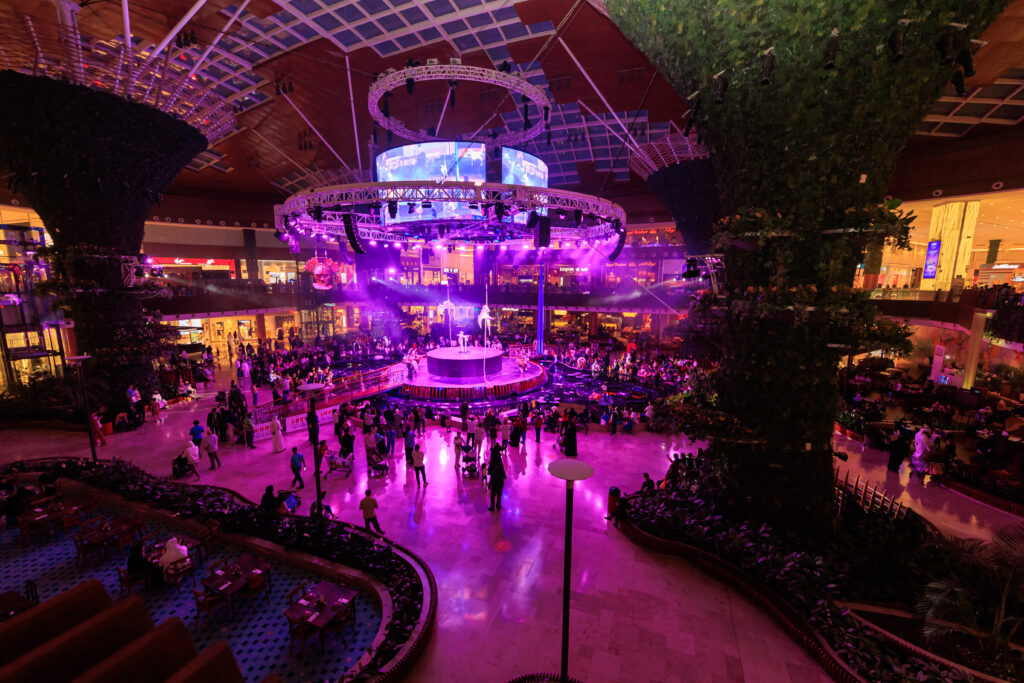
In a time when audience attention is harder than ever to capture, how can brands truly stand out?
One increasingly effective approach is experiential events: immersive, real-world event experiences designed to build emotional connections and lasting brand loyalty.
Why Are Experiential Events Worth Considering?
Today’s consumers crave authenticity, participation, and meaning. It’s no longer enough to tell people what your brand stands for; you have to show them, and more importantly, let them feel it.
According to recent data, 64% of consumers retain positive impressions of brands for one month or longer after a brand activation or event (ATN Event Staffing, 2024). Unlike traditional marketing, these experiences offer tangible, personal engagement, allowing people to experience your brand rather than just hear about it.
What Makes Experiential Events So Effective?
Immersive Environments
Carefully designed spaces that bring a brand’s story or theme to life help attendees feel like they’ve stepped into something unforgettable. Immersion can be physical, digital, or a mix of both.
Example:
A skincare brand might transform a venue into a serene, sensory spa experience—complete with custom lighting, guided wellness sessions, and ambient scents. Or, a tech brand could create a futuristic lab showcasing product innovation through AR-enhanced displays and interactive walk-throughs.
These environments don’t just impress; they reinforce brand values in a way that feels lived-in and memorable.
Interactivity
The more involved your audience is, the more likely they are to connect. Experiential events allow for hands-on engagement, giving people the opportunity to co-create, play, test, or even contribute to the experience.
Example:
At a product launch, attendees might design their own packaging at a customization booth, participate in live feedback walls, or test-drive new gear in a simulated environment. In F&B experiences, this could mean mixology counters or build-your-own stations that double as Instagrammable moments.
Interactivity shifts the focus from brand-to-audience talking to brand-and-audience dialogue—and that creates lasting impact.
Sensory Appeal
Multi-sensory design adds dimension and richness to the experience. It also boosts recall, which is key when your goal is to stand out in a crowded market.
Example:
A fashion brand might use scent diffusion paired with curated soundscapes to echo a collection’s seasonal mood. A sustainability-focused NGO might incorporate tactile materials, earthy scents, and projection mapping to simulate environmental changes and evoke emotional engagement.
Engaging more senses helps deepen the emotional footprint of your brand moment and makes the event feel real, not staged.
Emotional Connection
What your audience feels during an event shapes how they remember your brand. The best experiential events tap into emotion—whether it’s joy, curiosity, nostalgia, or inspiration.
Example:
A nonprofit might stage a walk-through installation representing the journey of a refugee, ending with a live testimonial. A heritage brand might create a retrospective exhibition that invites guests to share their own stories related to the brand’s legacy.
These moments don’t just inform; they connect. And that connection is what turns attendees into loyal brand advocates.
The Bottom Line
Experiential events are not just about making noise; they’re about creating meaning. From immersive brand activations to emotionally resonant installations, they leave your audience with something to remember, feel, and share.
If you’re looking to create deeper audience engagement and bring your brand to life in bold, tangible ways, experiential marketing offers a powerful path forward.
Curious to see what that looks like in action? Take a look at some of our most impactful and immersive events here.
